M.D. Ramanathan: How the legend lived up to the ‘outlier’ tag


Legendary musician M.D. Ramanathan.
| Photo Credit: The Hindu Archives
He was a complete musician in his times, and yet the outlier tag stuck to him for some reason. M.D. Ramanathan (MDR), whose birth centenary is on May 20, stood out with a number of outstanding credentials but followed a more sublime code without a compromise. Music around him largely fitted the mass entertainment architecture but MDR did not get attracted to it. His was a fresh brew and not from a coffee machine. So that could explain his outlier status but there have also been some wrong myths associated with his music.
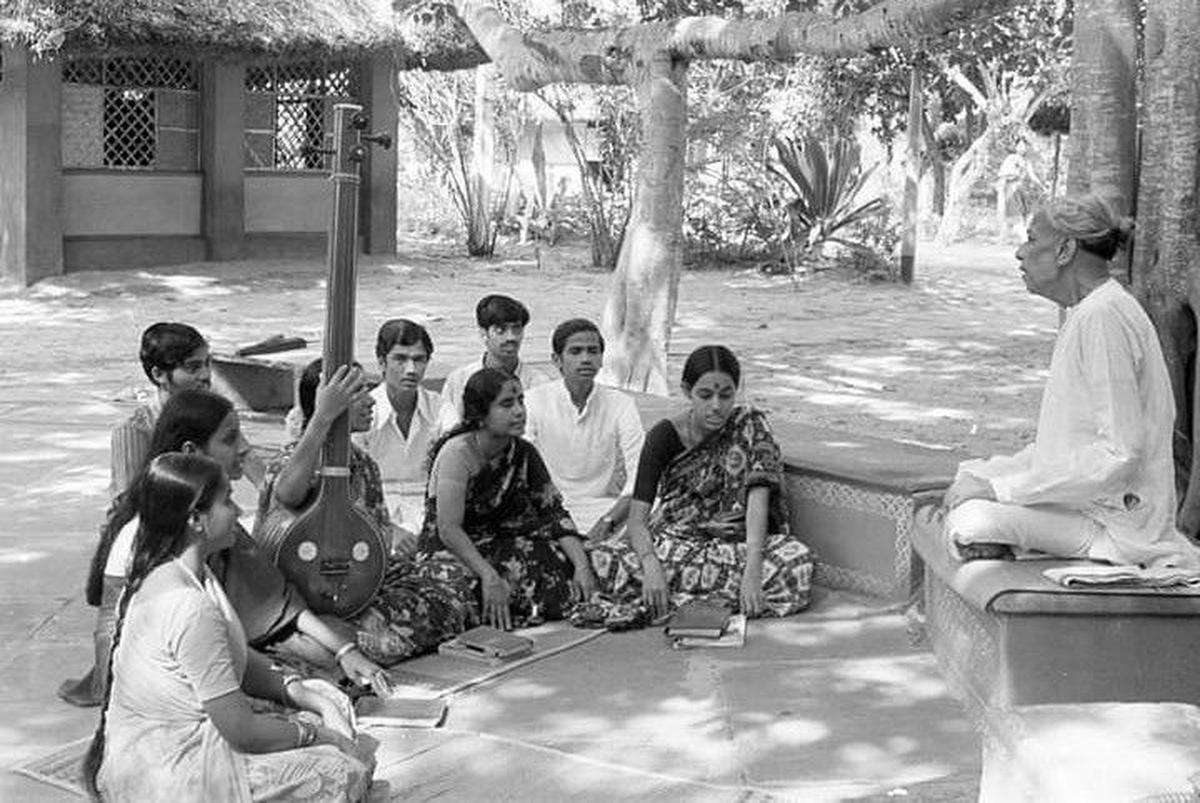
M.D. Ramanathan conducting a music class at Kalakshetra.
| Photo Credit:
The Hindu Archives
Fortunate to belong to the Saint Tyagaraja sishya parampara, MDR largely had one powerful influence in his musical upbringing — the doyen Tiger Varadachariar — who himself was an outlier with a unique bani. MDR’s gurukulavasam with Varadachariar and the subsequent sojourn at Kalakshetra as a teacher, following his guru, kept his music ‘original’ yet versatile enough for the performance stage. No lengthy alapanas or roller-coaster sangathis, yet, the raga alapana would keep ringing in the ears.
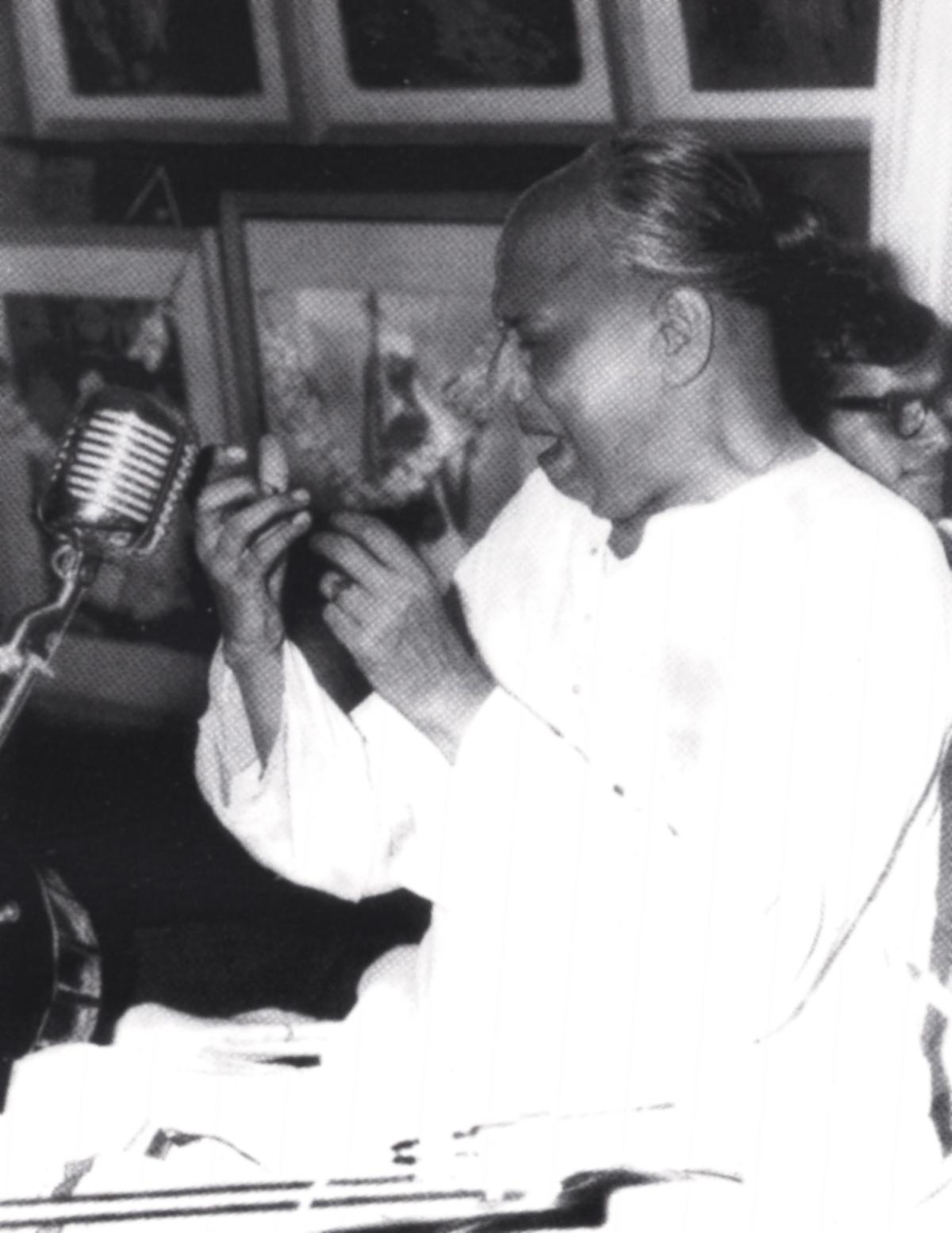
MDR at a performance
| Photo Credit:
The Hindu Archives
MDR’s blueprint consisted of short pregnant phrases or syllables — sometimes four-in-one avartanam, impactful pauses, measured up and down flights and pure sound production like the river streams, that is normally associated with Hindustani musicians. Gimmicks were cut out from such an approach.
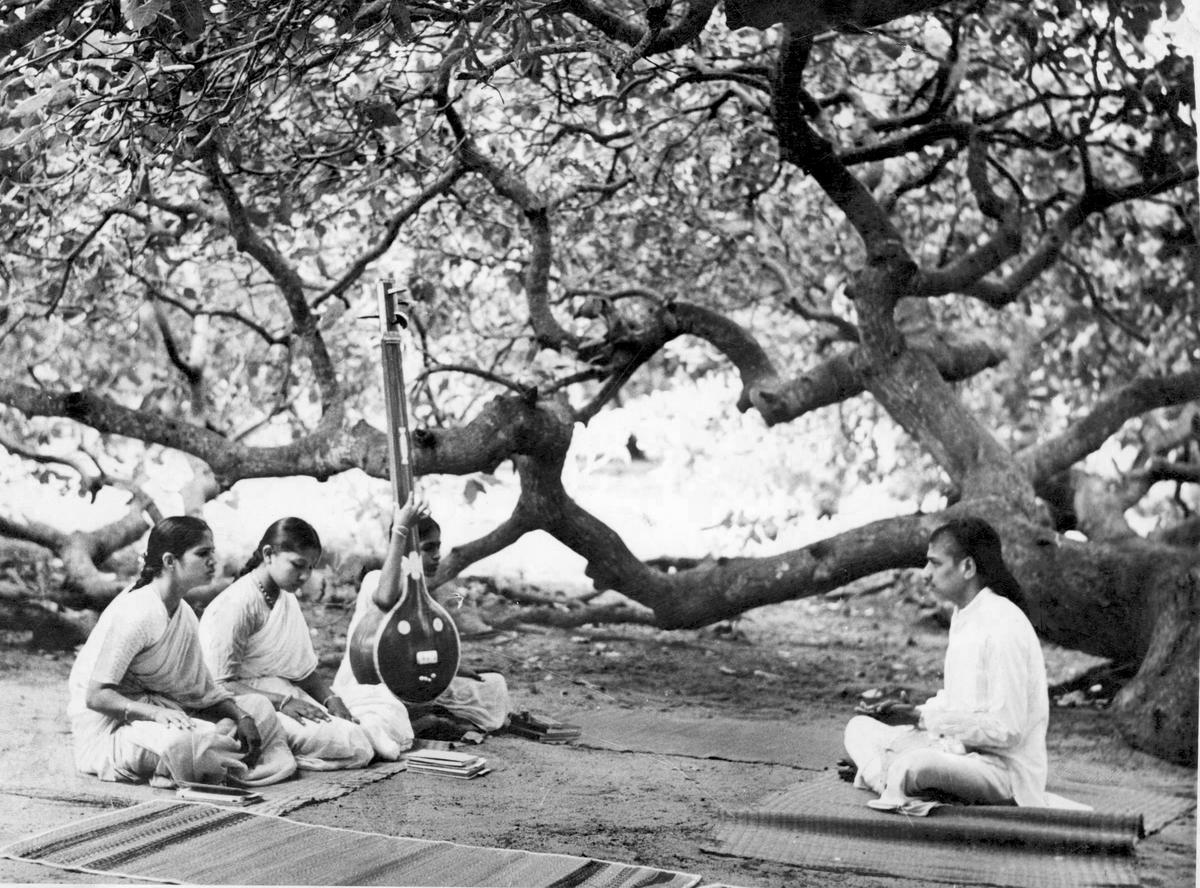
M.D. Ramanathan teaching students at Kalakshetra.
| Photo Credit:
THE HINDU ARCHIVES
The serenity of Kalakshetra got ingested into the soul of his music. His rendition of rakti ragas such as Sahana, Yadukula Kambodi, Sama, Surutti, Mukhari, Nilambari, and Anandabhairavi was the gold standard of his times. His concert had all the usual elements in controlled measures, but no part of it was routine. His swarakalpanas were often simple but laya had its role. Nothing was in excess .
Myths about his music
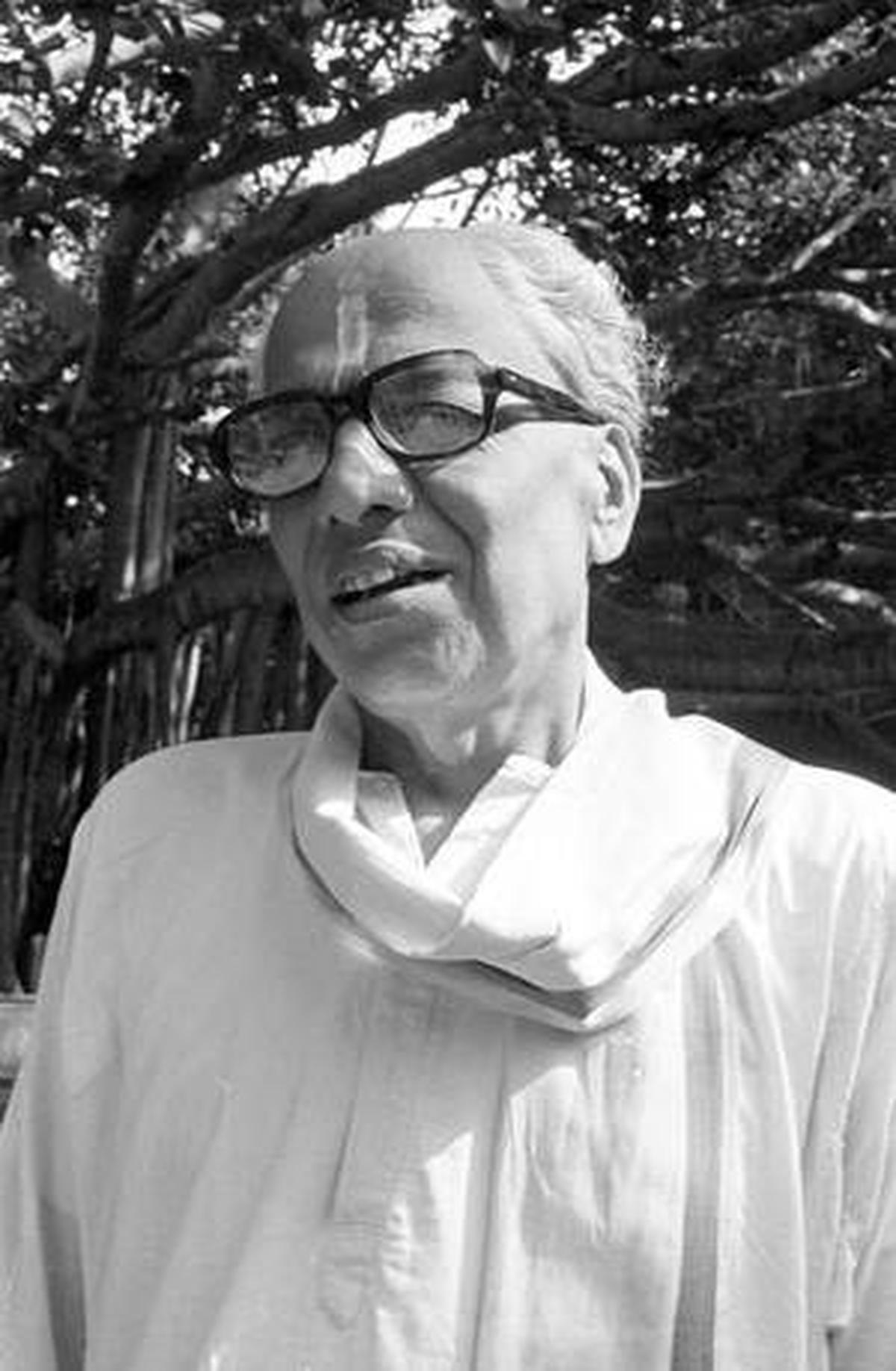
M.D. Ramanathan.
| Photo Credit:
The Hindu Archives
Several myths dogged him. The first was that his rendition was slow and sometimes dour. That will not stand a good scrutiny. MDR has sung ‘Sadinchane’ (Arabhi, Tyagaraja) as fast as GNB did and his first half of the concerts were as madhyamakala epitome as any others. His RTP would rightly be more reflective (and slow) but he was not a votary of the mechanical variety. Many of MDR’s concerts had about 15 pieces – that’s not a slow concert! Slow is not the opposite of whirlwind singing, he would argue.
The second myth was that MDR had a limited voice range, anchored at the lower notes. Yes, he was the star of low-note singing, but had no problem reaching the upper panchamam for fleeting moments. He would sometimes dwell in the lower notes, as if to demonstrate the skill for clarity and sustenance at that end of the scale. His Kalyani or Bhairavi alapana would often have majority of phrases at the upper octaves.
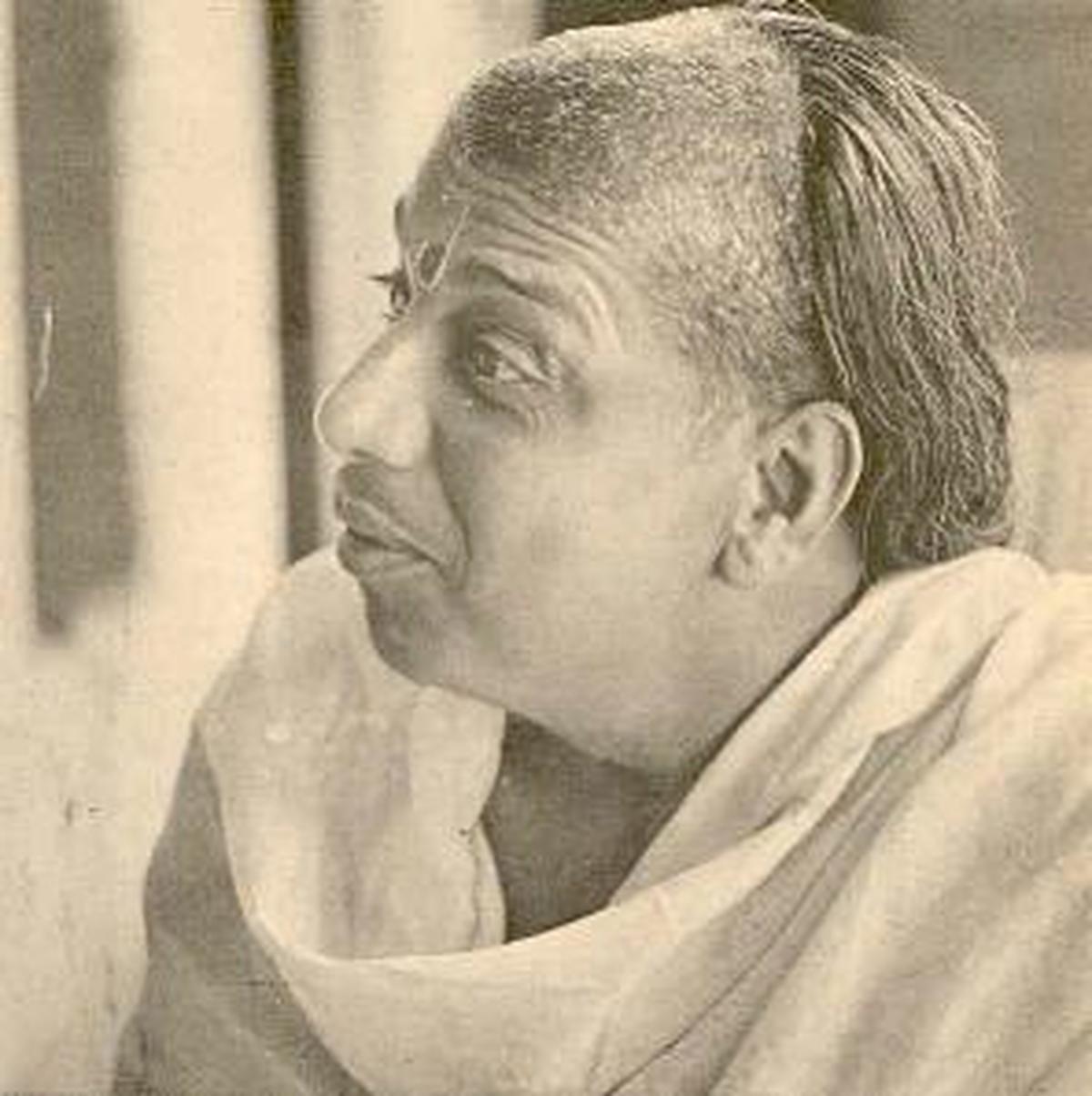
M.D. Ramanathan
| Photo Credit:
The Hindu Archives
The third myth was he was a ‘musician’s musician’. This is as cliché as it is cruel. If MDR had an audience of 200 people, all of them came willingly to listen to him. Out of this, a quarter would be the more enlightened ones (not just musicians), who revelled in every phrase he offered, while the rest had an affinity for his music and sought out the mystique or magical moments in the concert. So, MDR was more than a musician’s musician. He was the torchbearer of erudite music.
The fourth myth was that his music appeared simple. Yes it did, but it’s aesthetic quotient was no less. There were no meandering niravals or manufactured swara moments and jerks that craved for applause. For him, the musical mood was not to be disturbed by slog hitting. He was, thus, a classic test match player in the Jack Hobbs mould. That may have also contributed to his outlier tag.
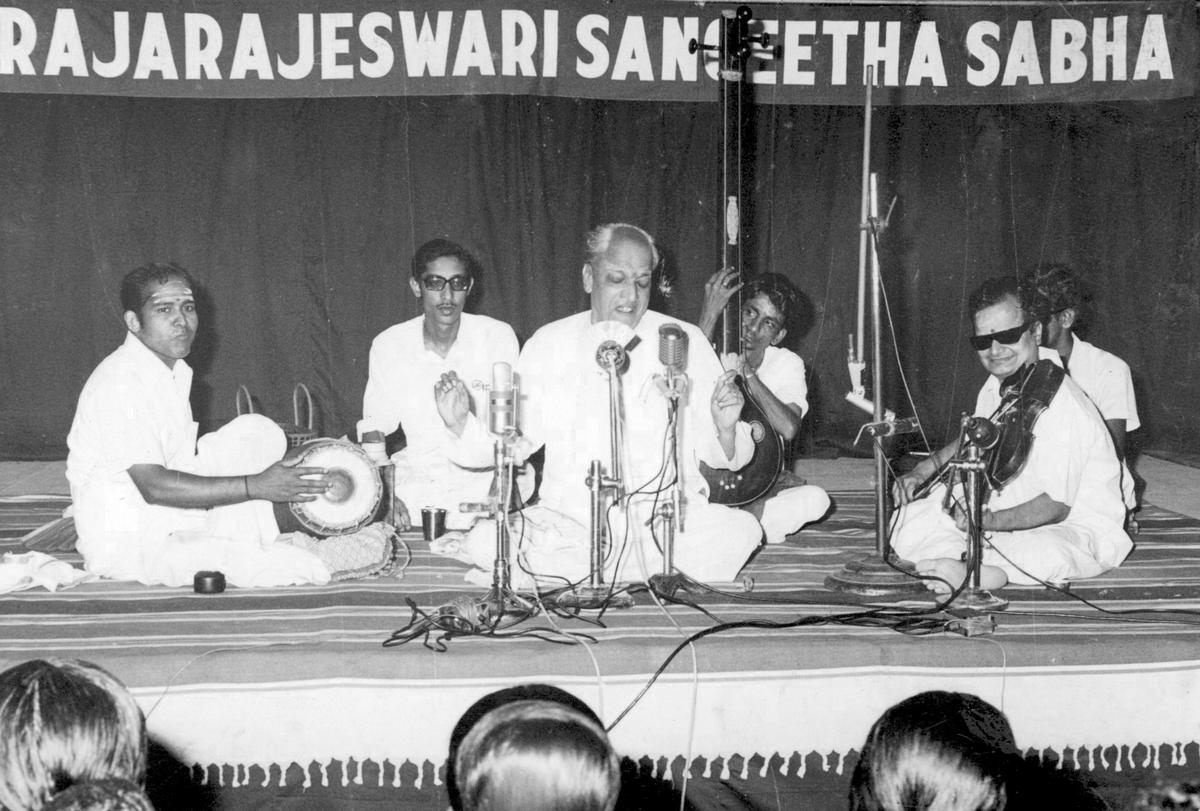
M.D. Ramanathan’s concert at the Rajarajeswari Sangeetha Sabha in Alleppey, Kerala.
| Photo Credit:
THE HINDU ARCHIVES
Musical paradigm
MDR missed some of the coveted titles in town, for reasons not known. It’s the same fate that befell other outliers like the late T.R. Subramaniam. Going by what one hears about his personality, this would have least bothered him. MDR’s music was built on deep research as well, as the few talks and lec-dems reveal. MDR’s sahityanubhava was notable as well, as his word-splits were more intelligently aligned to the meanings – a result of his facile language skills. Wit was in his armoury too. He stuck to his musical paradigm ignoring any criticism, much like another legend of his era, T. Brinda.
MDR turned composer in his later days and has left some precious pieces like ‘Sagara sayana vibho’ in Bagesri that is now a staple tukkada for emotive boost. His strong devotion to his guru meant that he coined his mudra with Tiger’s name in it — Varadadasa. Musicians don’t get sainthood but if they did, MDR would have been among the first to be bestowed.

